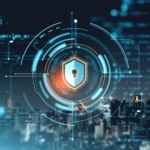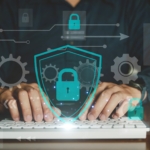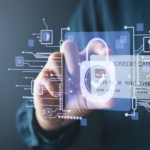Phishing is a common type of social engineering attack that attempts to trick people into revealing confidential information, such as passwords, credit card numbers, or Social Security numbers. Phishing emails are often disguised as legitimate communications from people you know, colleagues from work or other associations, banks, government agencies, and more. Many phishing campaigns will align their messaging to current political, social and other events of upheaval, even weather stories and other disasters are used to get the attention and increase curiosity of users. Today’s phishing attacks are often very sophisticated, targeted and may even use machine learning and AI technologies to make them more personal and therefore more effective. Phishing today is responsible for most successful computer intrusions. We see scores of attacks that could be linked to successful social engineering activity.
The downloadable CISA Phishing Prevention Guide is a valuable resource for individuals and organizations of all sizes to learn about and defend against phishing attacks. The guide provides comprehensive information on the latest phishing techniques and trends, as well as actionable advice and recommendations for mitigating phishing threats. One of the most important things that individuals and organizations can do to protect themselves from phishing attacks is to educate themselves, their employees and customers about phishing and the extreme risks associated with failure to be deeply skeptical and protect themselves.
The CISA Phishing Prevention Guide provides a variety of resources to help organizations train their employees on phishing awareness, including:
- What phishing is and how it works
- Common phishing techniques
- How to identify and report phishing emails
- How to train employees to be more aware of phishing attacks
- Technical measures organizations can implement to mitigate phishing threats
The CISA Phishing Prevention Guide is a valuable resource for several reasons:
- It is comprehensive and current. The guide covers the latest phishing techniques and trends and is regularly updated to reflect new information.
- It is authoritative. The guide was developed by CISA, a trusted source of cybersecurity information and guidance for the public and private sectors.
- It is practical. The guide provides clear and actionable advice and recommendations for individuals organizations of all sizes.
Here are some specific examples of how the CISA Phishing Prevention Guide can help organizations:
- Implement technical mitigation measures. The guide recommends a number of technical measures that organizations can implement to mitigate phishing threats. These measures include email filtering, multi-factor authentication, and security awareness training.
- Improve their incident response process. The guide provides guidance on how to respond to a phishing attack if one does occur. This guidance can help organizations minimize the damage caused by a phishing attack and recover more quickly.
The CISA Phishing Prevention Guide provides a variety of resources to help organizations train their employees on phishing awareness, including:
- Training materials: The guide includes a variety of training materials, such as presentations, handouts, and e-learning modules. These materials can be used to teach employees about the different types of phishing attacks, how to identify phishing emails, and what to do if they receive a phishing email.
- Simulation exercises: The guide also includes simulation exercises that organizations can use to test their employees’ phishing awareness skills. These exercises can help organizations to identify any gaps in their training and to make necessary adjustments.
In addition to training employees, organizations can also implement a variety of technical measures to mitigate phishing threats. The CISA Phishing Prevention Guide recommends the following technical measures:
- Email filtering: Email filtering solutions can help to block phishing emails from reaching employees’ inboxes.
- URL reputation services.
- Multi-factor authentication (MFA): MFA requires users to provide two or more factors of authentication to log in to their accounts. This helps to protect accounts from being compromised even if an employee’s password is stolen.
- Reduce local rights on computers to limit the impact of attacks on a user.
- Don’t use admin accounts to do non-admin functions.
The CISA Phishing Prevention Guide is comprehensive, authoritative, and practical, and it can help organizations to improve their cybersecurity posture and reduce their risk of being compromised by a phishing attack. If you have further concerns, or just want to learn about how Alvaka can support your organization’s phishing prevention journey, don’t hesitate to reach out.
Read some of our other Phishing Blogs:
What is Phishing, aka Social Engineering, and How Do I Avoid It?
A Scary Incident of a $21.5 Million Successful CEO Phishing Fraud







 Smoke testing is a term used to describe the testing process for servers after patches are applied.
Smoke testing is a term used to describe the testing process for servers after patches are applied.  This is a basic cost calculator for you to compute your typical monthly cost for patching your servers, PCs, laptops, tablets and associated application software. It also forms the basis for you to begin calculating your Return on Investment for software patching, or for comparison with alternatives to the manual process of patching operating systems and application software—such as Patch Management as a Service, also known as Vulnerability Management as a Service.
This is a basic cost calculator for you to compute your typical monthly cost for patching your servers, PCs, laptops, tablets and associated application software. It also forms the basis for you to begin calculating your Return on Investment for software patching, or for comparison with alternatives to the manual process of patching operating systems and application software—such as Patch Management as a Service, also known as Vulnerability Management as a Service.